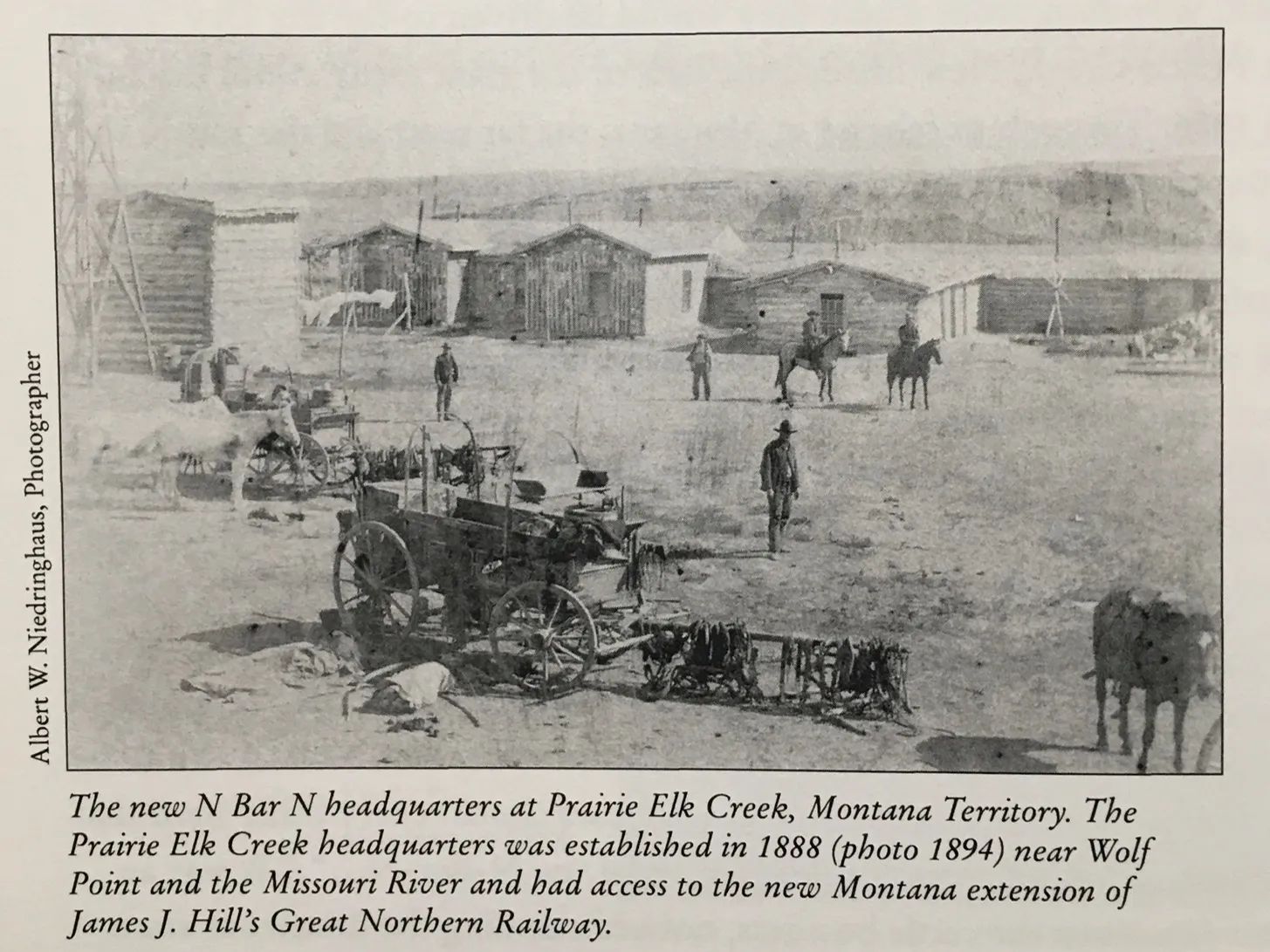
2008 MONTANA COWBOY HALL OF FAME INDUCTEE
1860 – 1920 LEGACY AWARD DISTRICT 2
N Bar N Ranch (1885-1899)
The N Bar N Ranch of northeastern Montana was established in 1886 by brothers William F. and Frederick W. Niedringhaus. During the 1850s, the Niedringhaus family had immigrated to St. Louis from Westphalia, Germany, and established a hardware store and tin factory. They accumulated a fortune after discovering a unique process for making gray speckled enameled kitchenware. In the early 1880s their company, St. Louis Stamping Company, had annual revenues of over $1,000,000 and they looked for ways to diversify their investments. They became involved in mining in Utah and Mexico, but it was the "beef bonanza" that really caught their eye.
In September of 1885, the brothers formed Home Land & Cattle Company of St. Louis with a starting capital of $500,000. The brothers chose N-N for a brand, which reflected the closeness of the two brothers to this major venture. The first investment of Home Land & Cattle Company was the Anchor THL Ranch owned by Major Thomas Hamilton Logan, an army officer from Fort Keogh, Montana. The THL Ranch, located at Little Dry Creek about 60 miles north of Miles City, Montana, was renamed the N-N Ranch.
The concept for Home Land & Cattle was to establish simultaneously ranches near the northern and southern points of the Texas Trail, with the northern range, essentially a maturing range with open grazing, being headquartered at Little Dry Creek. Major Logan became a shareholder in the company and was responsible for the management of the northern ranch along with his range manager, John Howard.
The mission of the southern ranches was to buy cattle in the south, winter them on New Mexico range, and drive them to the N-N in the spring. In 1886, the first full year of operation, a herd of 65,000 cattle were fattening on the rich Montana grasslands. The N-N operation required 15 chuckwagons, each accompanied by 12 or more riders.
A hot, dry summer and an intense, cold winter of 1886-87 decimated herds of cattle throughout Montana, Wyoming, and Dakota Territory. The N-N lost about 75% of its herd that year - 40,000 head. The brothers had two options: Leave the business and write off the losses, or continue on and build up again at lower prices. They decided to recapitalize Home Land & Cattle at $1,000,000 and immediately began to put up herds in the south to be driven north to a depleted range in Montana. CM Jacobs replaced Major Logan as manager of the Montana headquarters, which was moved from Little Dry Creek to Prairie Elk Creek near Wolf Point, Montana.
For several years almost every other herd that was driven over the trail to Montana bore the brand of N-N. The trail from White Deer, Texas, to Prairie Elk Creek, Montana, was a distance of about 1,000 miles, with cattle drives making about 15 miles a day. The trail bosses main concern was crossing both the North Platte River near Fort Laramie in Wyoming and the Yellowstone River above Miles City. Setting out from White Deer in April or May of each year, the drives followed the Texas Trail through various supply towns, including Lusk, Wyoming, and Miles City. The drive took an average of two to three months, arriving at the N-N northern range in mid-summer. The N-N at that time was driving about 15,000 cattle a year, which meant about six drives a year.
In 1888, the N-N Canadian base camp was moved from Wood Mountain to Rock Creek in Montana, about 20 miles north of the Milk River. This Milk River range was managed by Thomas Lawson "Los" Blackmon.
In the fall of 1891 Home Land & Cattle began to ship cattle to Montana by rail. The last great cattle drive set out from White Deer in the spring of 1892 under trail boss Tom Coffee. By 1899, the N-N had closed out in Montana, with a legacy lingering yet today. The Prairie Elk headquarters were sold to Conrad Kohrs and are better known as the CK Ranch.
The famous cowboy artist, Charles M. Russell, spent time working with the N-N outfit, often reflecting daily ranch work in his art. The N-N brand can be seen in many of his paintings. The Niedringhaus brothers collected many Russell originals and helped him market his artwork.

